It’s time to jump on your bike and head out on an adventure. Bikepacking is a great way to explore new places, with the freedom to travel on roads, gravel or singletrack with everything you need strapped to your steed. If you’re just getting into it, learn the basics, like what bike to ride and how to pack your gear. Once you’ve got those down, check out these tips and tricks to make your bikepacking adventures even better.
1. Tweak Your Tires
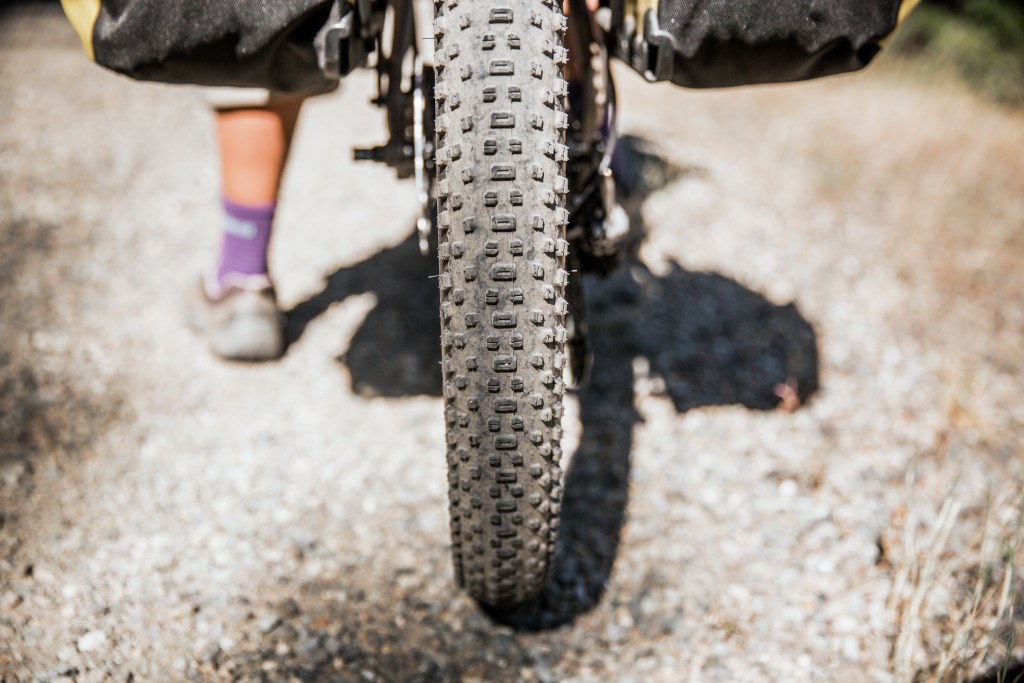
Adjust tires and suspension to fit the terrain and the amount of weight you’re carrying. The more weight, the more you should increase the air in your tires and the suspension pressure. Your bike will handle better and you’ll be less likely to get flats.
2. Slow Your Roll
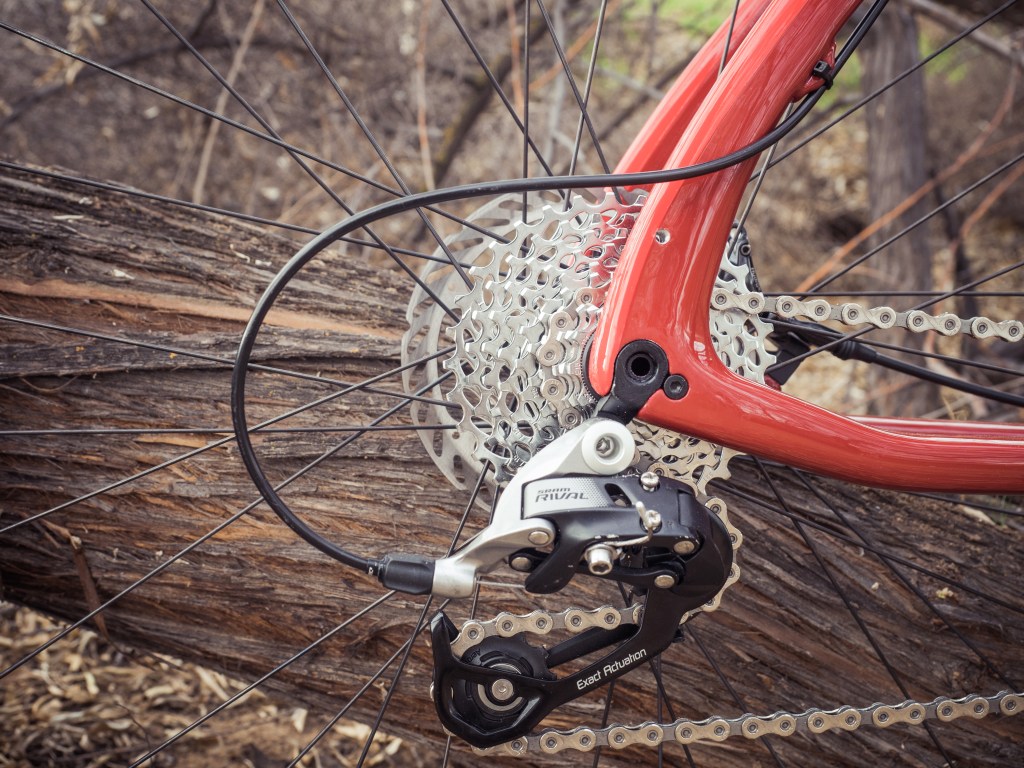
Add lower gears to your range to help deal with heavy loads in mountainous terrain. Granny will be proud.
3. Liters for Miles
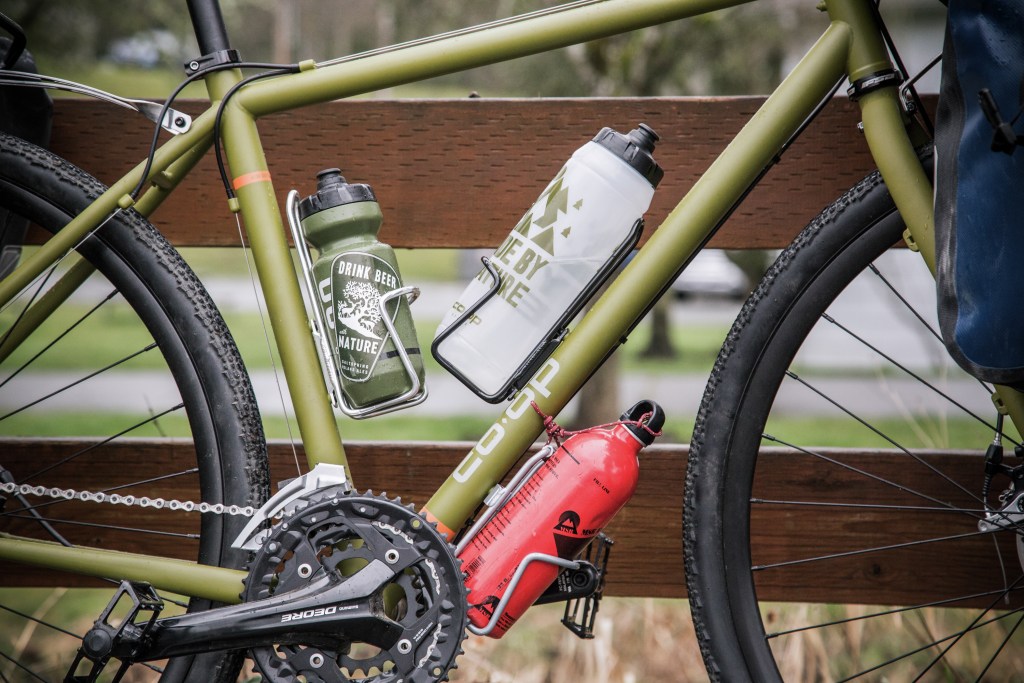
You’re going to want extra water capacity—attach as many bottle cages to your bike as you can. If you don’t have a ton of attachment points, use hose clamps from the hardware store to attach cages almost anywhere you like on your frame or fork, no drilling required. You can also secure bottles directly to the frame using ski straps (like these from DAKINE) and skip the cages completely.
4. Lighten Up
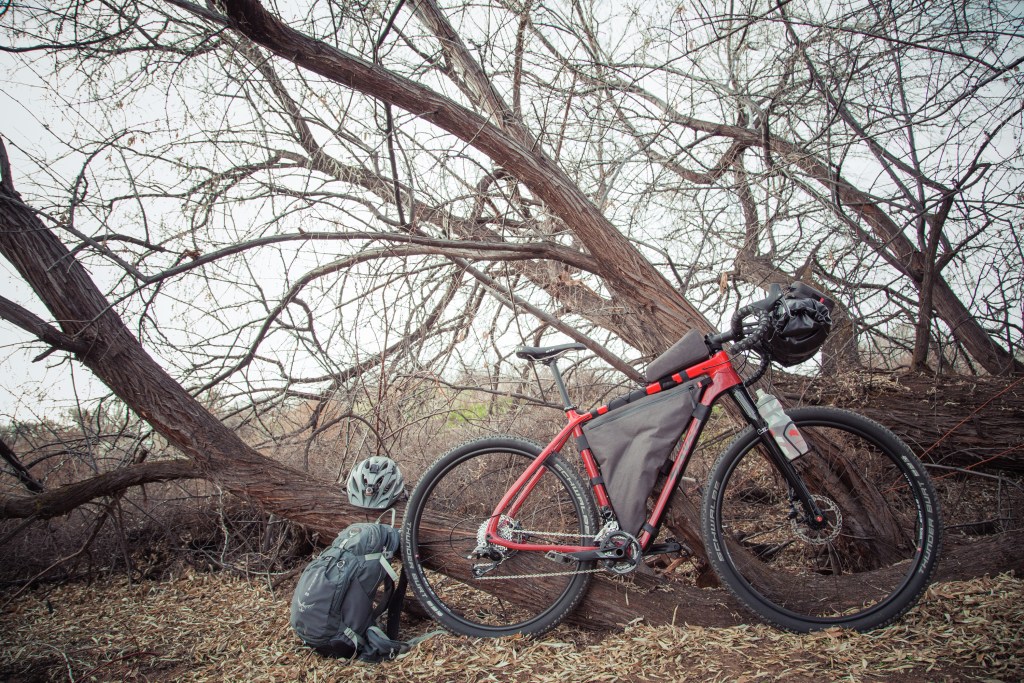
Think like a thru-hiker. Pack only what you need and choose gear that’s ultralight. Trust us, after hauling gear for miles, your body will thank you. You don’t have to spend a ton of money to go light either—try making your own gear. Fashioning a stove out of a soda can is a cheap and easy way to lighten your load.
5. Make It Work
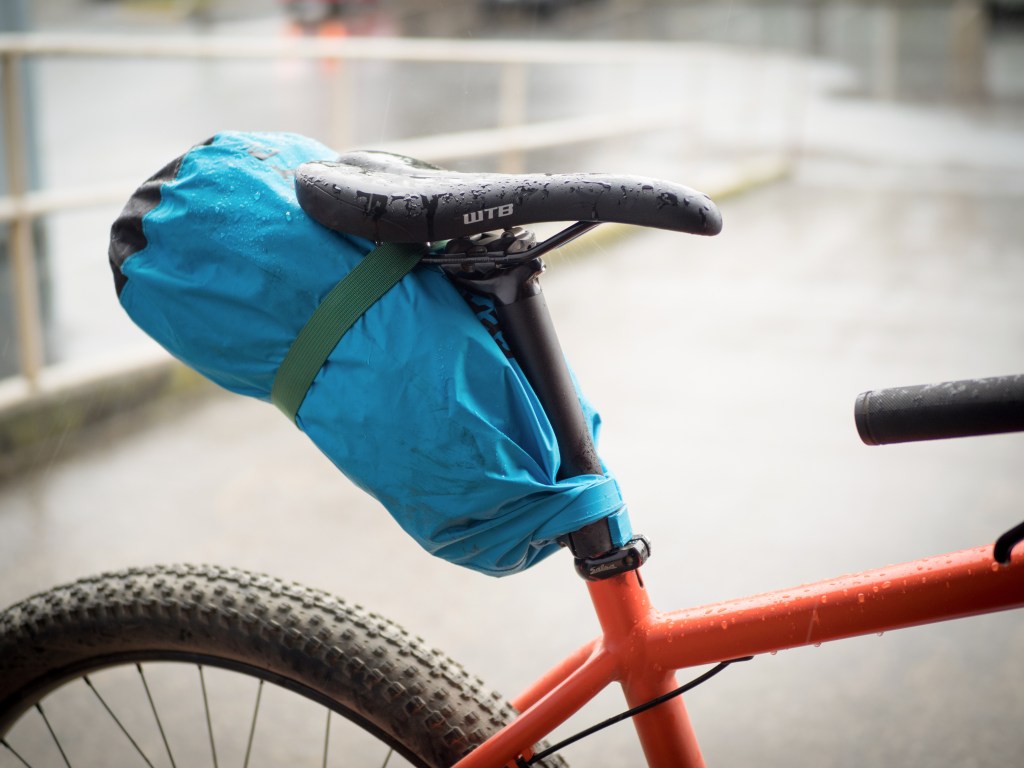
Don’t have fancy bikepacking bags? Clip the top closure of a dry bag around your seat post and secure with a second strap around the seat rails for a DIY version. Most cylindrical-shaped objects can be strapped to your handlebars—just make sure they don’t interfere with steering or any of your components. If you choose to wear a daypack, keep weight at a minimum to minimize strain on your back, shoulders and butt. Some people choose to skip a backpack completely to stay cooler and more comfortable.
6. Have a System
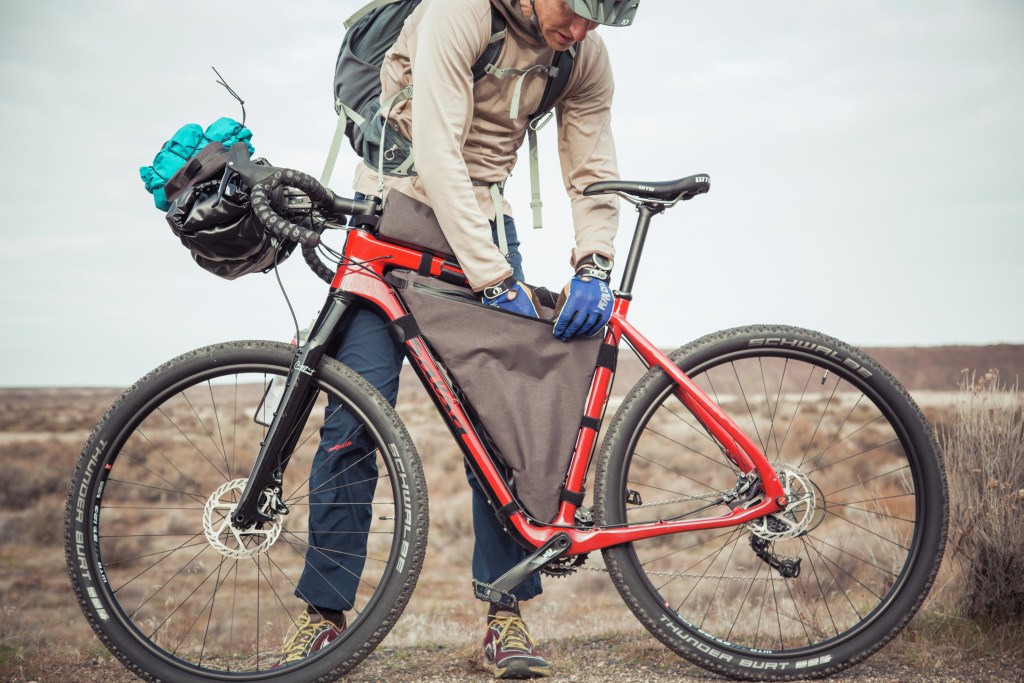
Get smart with organization and always pack items in the same place. You’ll save a ton of time if you don’t have to dig through three different bags every time you need something. Think about the items you use regularly and keep them accessible in your frame or handlebar bag. Bulkier items like sleeping bags fit well behind your seat.
7. Warm Hands, Warm Heart
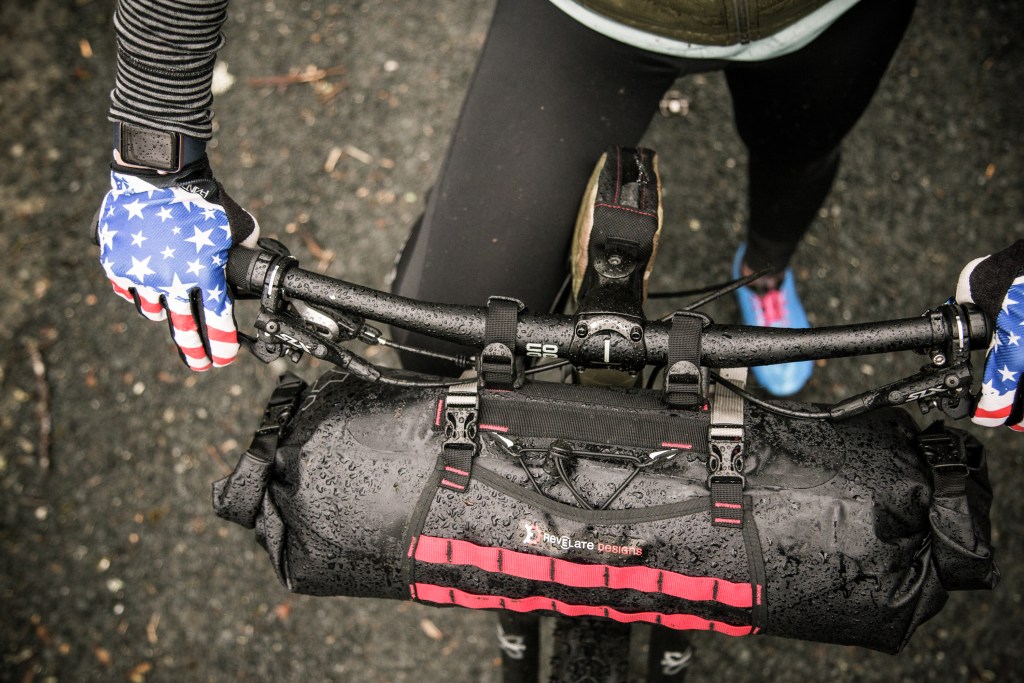
Good gloves and warm socks are key ingredients to happiness when you’re out in chilly weather. Bring extras if you’re expecting rain: Soggy hands and feet are no fun. Check out our selection of bike gloves and socks.
8. Fix It
Part 1: Bikepacking can take you to some remote places with no quick way out. Zip ties, cord and duct tape can be the perfect fix for many issues that pop up on the road. You should also check your tool kit and make sure you have everything you need to make your way back to civilization. It’s always a good idea to have an extra section of chain, a master link, a derailleur cable, spare spokes for both tires, and an extra Presta core if necessary. For longer trips, you might even throw in an extra derailleur hanger, brake pads and chain lube.
Part 2: Always know where the local bike shops are on your route. These shops can be your trip’s saving grace, particularly if you have the aforementioned spare parts in case they don’t have the right ones for your bike. And it never hurts to make friends with the techs when you’re in a hurry—everyone loves pizza and beverages.
9. Pedal to Some Metal
After many hours in the saddle, it can be nice to have entertainment to pass the time. Download some music and podcasts before you leave so you can listen while you ride. Save it for the singletrack though; don’t have headphones on when you’re riding on streets with cars.
10. Stay Charged
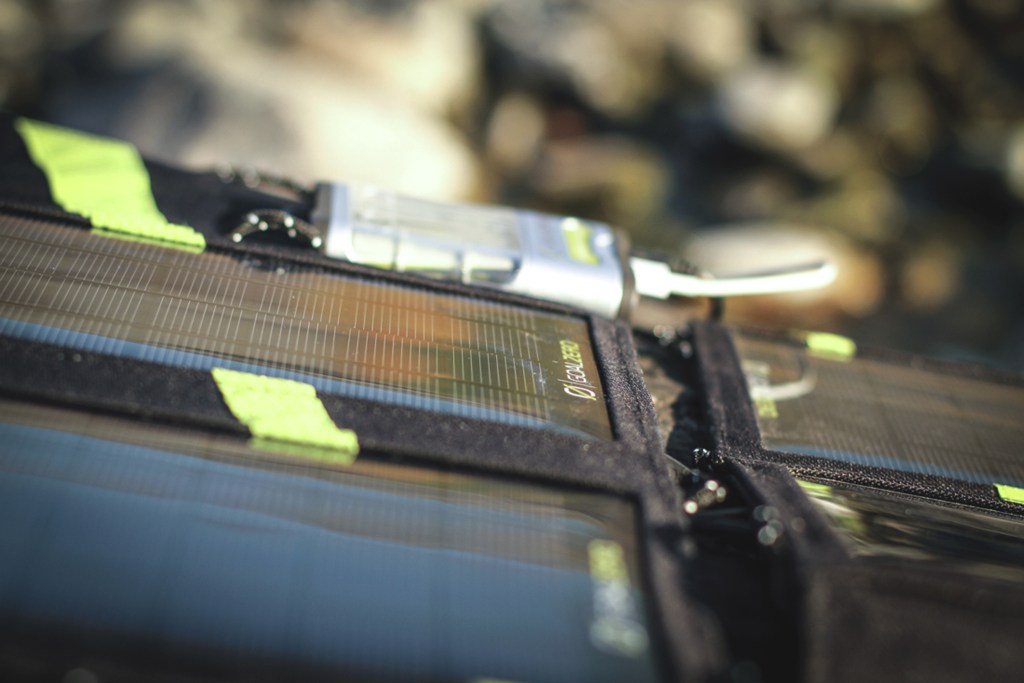
Make sure your electronics are useful the whole trip. Take plenty of backup batteries for your GPS (though you should always carry paper maps as backup). A solar panel can also be a good choice—strap it to one of your bags so it charges a backup power bank or your phone during the day.
11. Snack Attack
Pack some of your favorite guilty-pleasure snacks: If your thing is sour gummies, good chocolate or jalapeño chips, bring some along. They make great rewards after a tough climb. Repackage them in plastic baggies to save space. When the snacks are gone, you can use the bags for other things like packing out garbage.
12. Find a Watering Hole
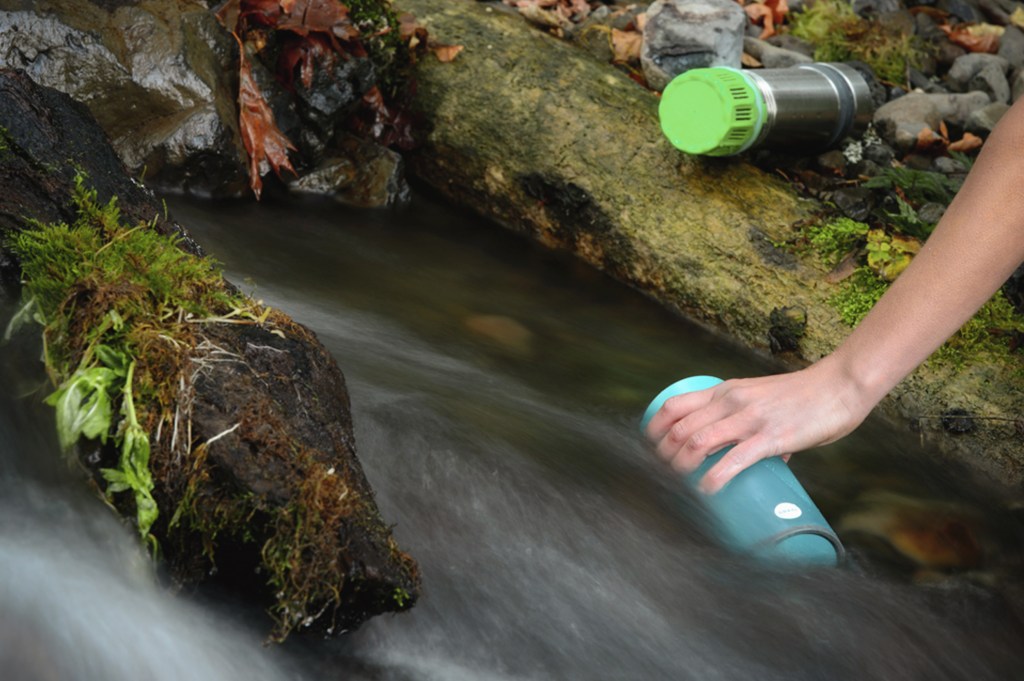
When planning a route, consider your water sources. At the end of a long day, the last thing you want to do is ride additional miles because your campsite is dry. Having a cold stream nearby is also great for getting cleaned up and soaking tired feet. Make sure to treat or filter any water you plan to drink or use for cooking.
13. Wash Up
Long days and lots of miles certainly don’t help you or your clothes stay clean. In particular, riders often forget to clean helmet pads, even though they absorb sweat all day. Keep a gallon plastic bag handy, and throw whatever needs washing in with some water and a drop of biodegradable soap. Swish it around, scatter the dirty water and then rinse with clean water. Make sure to follow Leave No Trace principles when disposing of soapy water. Fashion a clothesline out of cord and hang up it in your tent. Your body heat will help damp clothes dry faster.
